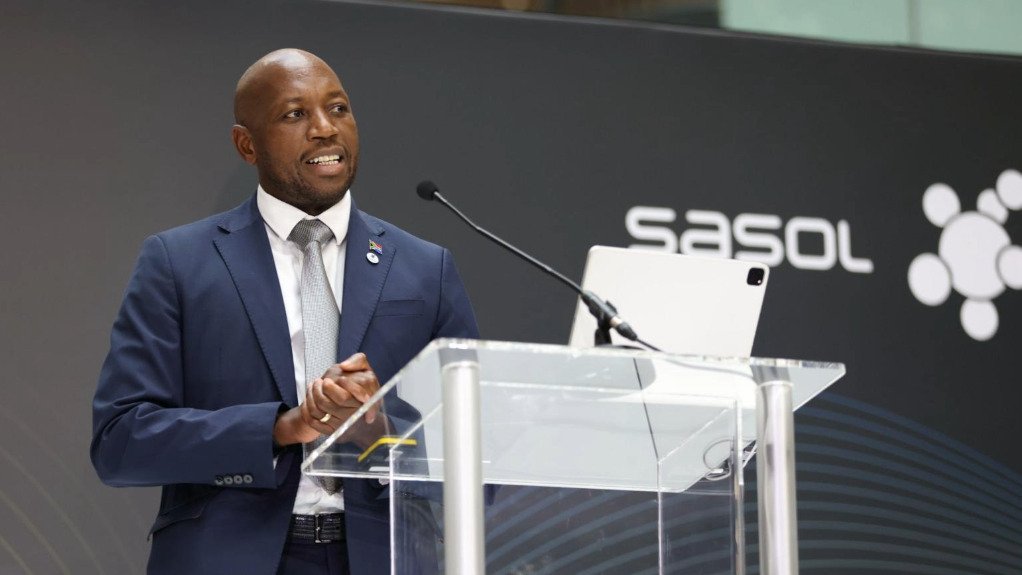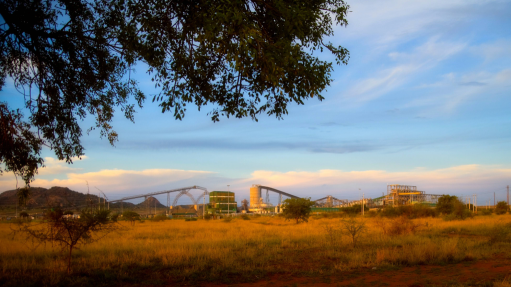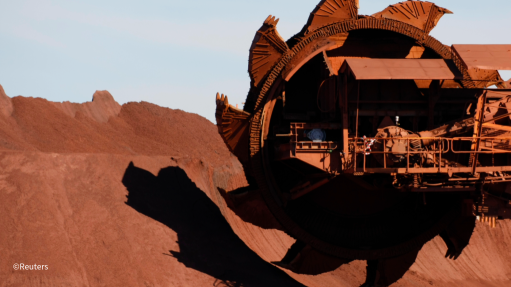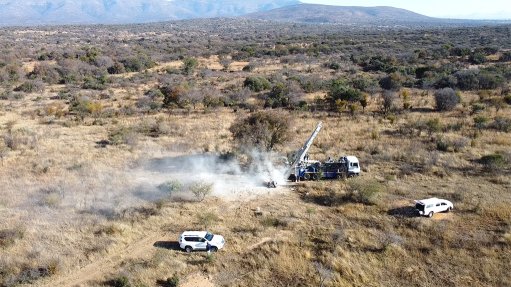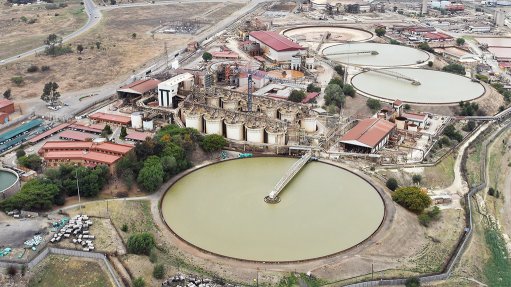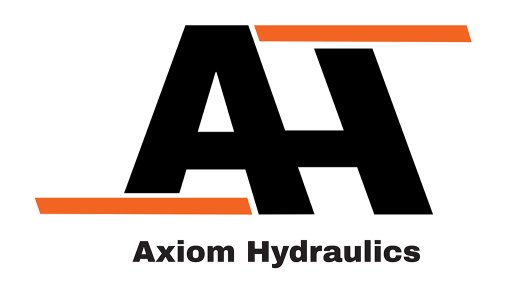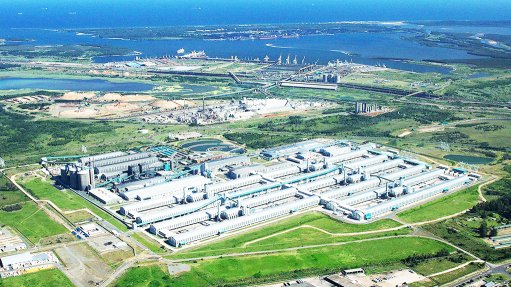Sasol slashes emission-reduction capex but insists 30% target remains intact
Energy and chemicals group Sasol has announced a dramatic 70% cut to the capital expenditure (capex) budget associated with its greenhouse-gas emission reduction roadmap to 2030, while still insisting that its 30% reduction target remains intact.
CEO Simon Baloyi outlined the revised roadmap at the JSE-listed group’s 2025 Capital Markets Day, announcing that it would invest between R4-billion and R7-billion on emission-reduction projects over the coming five years, compared with a previous range of between R15-billion and R25-billion.
The revision comes amid growing frustration from within the investor community over Sasol’s financial and operational underperformance, but will also raise fresh concerns about whether the coal-heavy group is serious about tackling its large environmental footprint.
The revised plan has eliminated a previous option to potentially reduce production at Sasol’s Secunda Operations, in Mpumalanga, to meet its decarbonisation commitment.
Instead, Baloyi announced Sasol’s intention to restore production at Secunda to above 7.4-million tons, from below 7-million tons currently, and position it to break even by 2028 at an oil price of only $50/bl.
The plan hinges largely on addressing the coal quality problems that have been bedevilling Secunda for several years.
Sasol’s Twistdraai export coal plant is being repurposed into a 10-million-ton-a-year destoning operation to improve the quality of coal being used in the Secunda gasifiers and the group has abandoned a capex-heavy plan to briquette its coal fines.
ELECTRICITY TRADING
The revised emissions reduction roadmap also includes a higher renewable-energy target of 2 GW, up from 1.2 GW, which Sasol will pursue through a combination of power purchase agreements with independent power producers, with 575 MW having already been signed up, and projects in which it takes an equity position.
Executive VP for business building, strategy and technology Sarushen Pillay reported that the company would build solar PV plants on land in close proximity to its Secunda and Sasolburg operations to take advantage of existing grid infrastructure and to avoid wheeling costs.
In addition, Sasol would be applying to the National Energy Regulator of South Africa for a trading licence to help it derisk its renewables investments by having multiple offtakers, rather than relying solely on its own demand.
The licence would enable it to approach larger businesses, while also targeting smaller firms through Ampli Energy, which it launched jointly with Discovery Green in mid-May.
The new plan still includes Sasol’s earlier energy-efficiency projects, but also integrates so-called carbon-market mechanisms, such as carbon credits or renewable-energy credits.
It does not include the turndown of the boilers used to produce electricity. This, after Sasol controversially succeeded in securing permission from South Africa’s environmental authorities to reduce the sulphur dioxide (SO2) emissions from its coal boilers on an overall load basis, rather than reducing the SO2 concentration of each individual boiler.
A large portion of the capex revision, however, relates to the group’s abandoning of the coal briquetting plan, as well as its reassessment of the economic viability of using imported liquefied natural gas (LNG) to replace coal at Secunda.
LNG IMPORTS?
As has been widely reported, the group will also not seek, for economic reasons, to use LNG as a replacement for dwindling natural gas from Mozambique to produce fuels and chemicals.
Nevertheless, it remains a strong proponent of LNG imports to shore up supply for those downstream industries in Gauteng and KwaZulu-Natal that are reliant on the gas it imports from Mozambique, the supply of which will stop in 2028.
Sasol has entered a partnership with Eskom to assess aggregation options and supports emerging proposals to use gas-to-power to help “anchor” demand for LNG imports at scale.
However, Baloyi confirmed that it would also seek regulatory approval to supply customers with methane-rich gas produced from coal to “bridge” an anticipated supply gap between 2028 and 2030, by which time LNG import infrastructure is expected to be in place to meet demand.
The group would continue to pursue, in partnership, green-hydrogen-based sustainable aviation fuel (SAF) projects, and expects the EU’s directives to be adapted by year-end to unlock the production of SAF from Secunda.
It is also piloting the conversion of used cooking oil into fuel at Natref and is working with Anglo American and De Beers on a pilot to produce oil crops on degraded mining land using minewater.
The immediate focus, however, was on improving the performance of the group’s existing international chemicals unit and its Southern Africa energy and chemicals businesses, with Baloyi announcing that it had set a series of new financial targets to be met by its 2028 financial year.
These included achieving adjusted earnings before interest, taxes, depreciation, and amortisation by that date of up to R71-billion, and reducing net debt to below $3-billion.
It has also lowered its yearly capex guidance to between R23-billion and R31-billion, which is R5-billion to R6-billion less yearly than its previous range for the three-year period.
Article Enquiry
Email Article
Save Article
Feedback
To advertise email advertising@creamermedia.co.za or click here
Announcements
What's On
Subscribe to improve your user experience...
Option 1 (equivalent of R125 a month):
Receive a weekly copy of Creamer Media's Engineering News & Mining Weekly magazine
(print copy for those in South Africa and e-magazine for those outside of South Africa)
Receive daily email newsletters
Access to full search results
Access archive of magazine back copies
Access to Projects in Progress
Access to ONE Research Report of your choice in PDF format
Option 2 (equivalent of R375 a month):
All benefits from Option 1
PLUS
Access to Creamer Media's Research Channel Africa for ALL Research Reports, in PDF format, on various industrial and mining sectors
including Electricity; Water; Energy Transition; Hydrogen; Roads, Rail and Ports; Coal; Gold; Platinum; Battery Metals; etc.
Already a subscriber?
Forgotten your password?
Receive weekly copy of Creamer Media's Engineering News & Mining Weekly magazine (print copy for those in South Africa and e-magazine for those outside of South Africa)
➕
Recieve daily email newsletters
➕
Access to full search results
➕
Access archive of magazine back copies
➕
Access to Projects in Progress
➕
Access to ONE Research Report of your choice in PDF format
RESEARCH CHANNEL AFRICA
R4500 (equivalent of R375 a month)
SUBSCRIBEAll benefits from Option 1
➕
Access to Creamer Media's Research Channel Africa for ALL Research Reports on various industrial and mining sectors, in PDF format, including on:
Electricity
➕
Water
➕
Energy Transition
➕
Hydrogen
➕
Roads, Rail and Ports
➕
Coal
➕
Gold
➕
Platinum
➕
Battery Metals
➕
etc.
Receive all benefits from Option 1 or Option 2 delivered to numerous people at your company
➕
Multiple User names and Passwords for simultaneous log-ins
➕
Intranet integration access to all in your organisation



